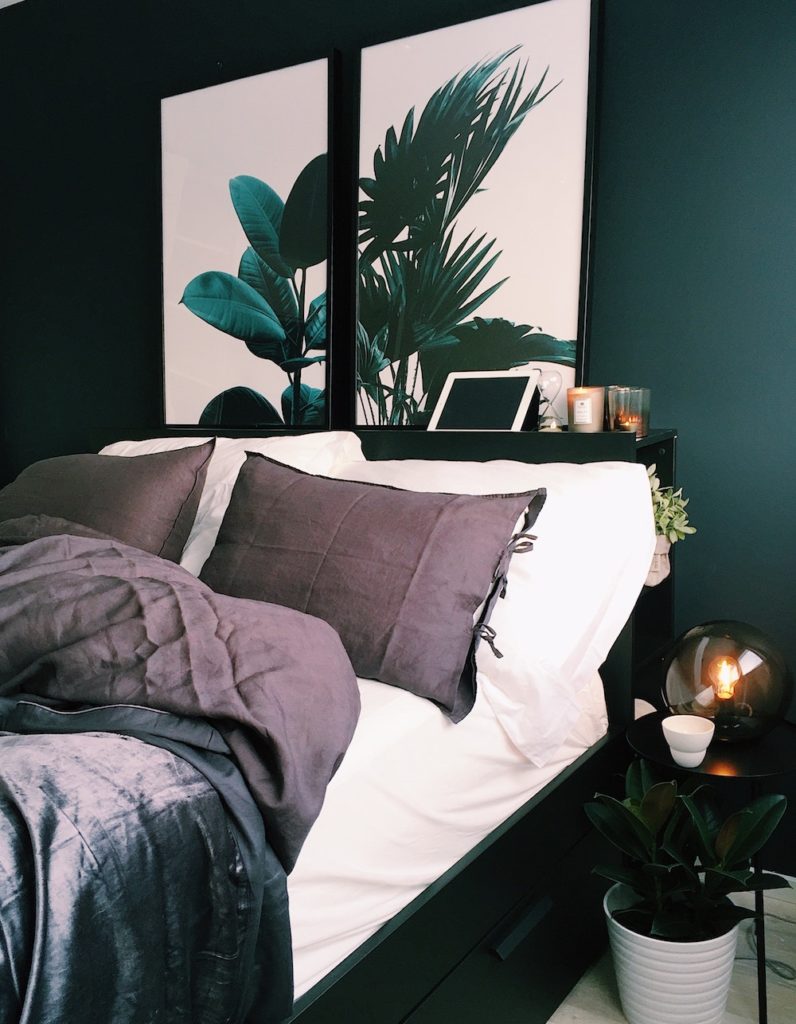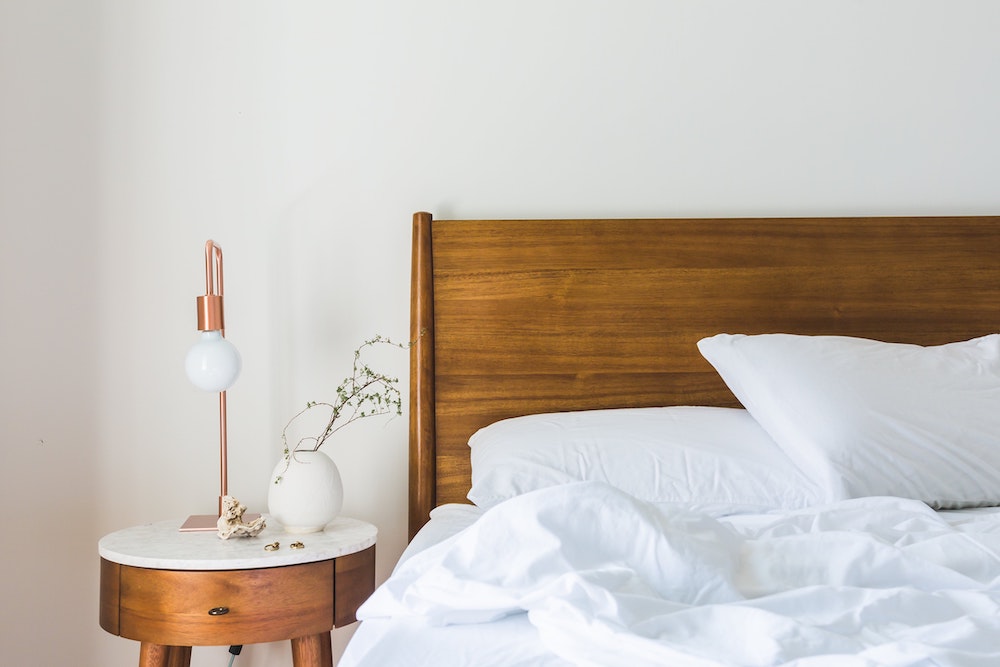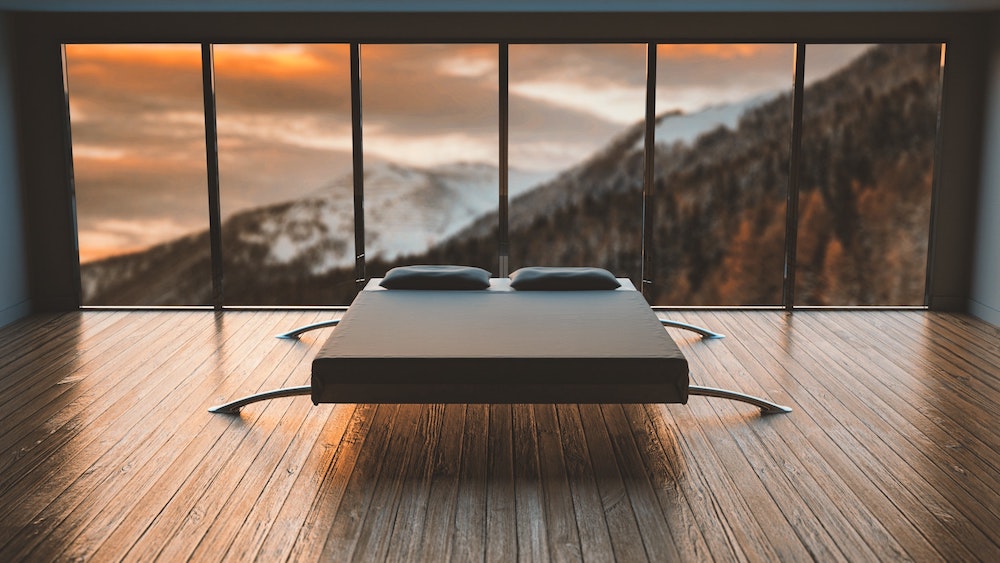Since the National Mental Health Act of 1946, outlook on mental health is viewed in a much more positive light. Effective treatments have been developed and the public is much more aware of the effect that mental afflictions have on their fellow human beings.
Sleep Better
Struggling to get restful sleep? Check out our sleep hygiene guides to learn about the science behind sleep and how to take steps towards improving your night’s sleep.
Just as mental illness isn’t uncommon, going through trauma is also not a rare ordeal. It’s very common for someone to experience an event that will affect them for a period of time afterward. Some people will be affected more than others. This prolonged trauma after a traumatic event is a disorder called PTSD.
Recent research shows:
- 7 out of every 100 people will be traumatized badly enough to affect them for an extended period of time after the initial event at some point in their lives
- 10 percent of women develop PTSD at some point in their lives
- 4 percent of men develop PTSD at some point in their lives
- 8 million adults have Posttraumatic Stress Disorder during a given year
Although general understanding of Posttraumatic Stress Disorder is still so minimal, it seems there are many people who are affected by this disorder.
Even with today’s technology, there is much we do not know about the way the brain processes traumatic events. Researchers aren’t entirely sure why most people with PTSD develop a sleeping disorder alongside the initial disorder either.
It seems that most of the population is stuck on cliche pop-culture portrayals of this disorder. Characters suffering from PTSD are shown as jumpy, paranoid, and unable to rest. In fact, there are several ways people with PTSD show symptoms, from being jumpy and paranoid to more reclusive and shut-in.
While some people can recover from PTSD in a quick amount of time, some people take months or years to fully recover. Sometimes, victims are able to recover on their own. People who are not likely to recover on their own are those who still experience symptoms for more than a couple of months. These people should consider seeing a specialist.
The recovery process can be grueling. It can involve talking about and reliving the traumatic event, leaving the patient mentally and physically tired.
Unfortunately, Posttraumatic Stress Disorder influences the everyday lives of those affected. Their mood is affected, their mannerisms, their ties with the people in their lives, their physical wellbeing, their work life. If a person you know has lived through a traumatic event, it can be hard to recognize them after.
One of the most common side-effects of PTSD is difficulty sleeping. Everything from nightmares to night sweats to restlessness are symptoms that affects their ability to close their eyes and rest until the next day.
In this article, we will cover:
- What is Posttraumatic Stress Disorder
- What are the symptoms of PTSD
- How the disorder affects the lives of the victims
- What can be done to alleviate the symptoms
What is Posttraumatic Stress Disorder?

PTSD is a trauma and stress disorder that develops late after an event where trauma was experienced. Clinical depression, and anxiety disorders have a nasty habit of accompanying PTSD. This is mainly due to the victims attempt to alleviate the symptoms of their disorder on their own.
But that’s just the surface of this age-old mental disorder.
PTSD revolves around the embodiment of the victim’s traumatic experiences. It is accompanied by real physical reactions to past trauma, such as sweating palms and escalated heart rate.
The hardest part of this disorder is how differently everyone affected reacts. While one person reacts to an episode with tears and visible shaking, another person will endure an episode silently. This does not mean either episode is worse than the other.
But what triggers these episodes?
One of the most common terms connected to this disorder is the word trigger. Triggers are a sound, smell, visualization, textures, or even thoughts that remind the victim of their trauma. These triggers could be anything. Something extremely specific or something more general could be a trigger. For instance, it could be an angry tone combined with aggressive body language or it could be the sound of a car backfiring.
Even though there are records of PTSD symptoms as far back as the 1600s, it wasn’t until the late 1970s that medical and mental health services recognized it as a true mental illness. Many physicians noted symptoms, such as loss of appetite, anxiety, insomnia, and depression. These symptoms have been recorded in individuals throughout history.
So, how does PTSD impact the lives of those affected? First, let’s look into the type of people who are susceptible to having this condition.
Anyone who has experienced a traumatic event in their lives is susceptible.
This stress-induced disorder could be brought on by all sorts of trauma, such as:
- a car crash
- witnessing the loss of a loved one
- a surgical operation
- being assaulted
- other violent experiences
It is important to receive professional help if you think you could be experiencing PTSD. If left unattended the symptoms of Posttraumatic Stress Disorder may worsen.
In the section below, you can find the type of negative effects that PTSD can have on a sleeper.
PTSD Sleep Symptoms
Trust us when we say you are not the only person who has trouble sleeping easily at night. Roughly 50 to 70 million Americans are affected by sleep disorders. And of those American’s 40 percent are diagnosed with a type of mental illness.

There are many factors that go into having a good night’s sleep. Not having the correct comfort level in your mattress is a simple enough reason not to sleep well. Not being able to sleep because of something that happened to you is a good reason too.
The time after a traumatic event can be stressful. It can cause an individual to forgo sleep due to stress or the inability to stop thinking about the event. Poor sleep can have a negative impact on physical and mental health. A tired body will not have the energy to continue through a regularly full schedule. The loss in energy will decrease the body’s ability to fight off germs. And, eventually, the body risks becoming ill due to fatigue. With any mental disorder, sleep may be hard to achieve. But, combating mental disorders with a sick body is never a good mix.
Sleep issues due to trauma:
- The victim may experience flashbacks to the event of their trauma. These flashbacks can happen while awake or asleep.
- The victim might feel the need to be constantly aware of their surroundings.
- For victims that experienced violence, darkness of any kind could cause them to be more apprehensive and restless.
- Nightmares can cause the victim to jerk awake. This disrupts the REM sleep cycle that won’t allow the victim to get a full night’s rest.
- Insomnia or sleeplessness
- REM sleep behavior disorder, which is a combination of night terrors, irrational fears, sleep talking, and night sweats. People who have this disorder are typically people physically acting out their dreams as they are sleeping.
- Delayed phase sleep disorder or dysregulation of a person’s biological clock in comparison to those in the local area.
- Obstructive sleep apnea or when the muscles in the back of the throat block, or obstruct, the airways while sleeping.
- Sleepwaking
- Fear of going to sleep due to nightmares or constant awareness of surroundings.
Now that we have a general knowledge of what posttraumatic stress is, we can now focus on our original question: How does PTSD affect daily life? In the section below, we will help you understand how the disorder changes a person’s brain chemistry. We will also discuss how it affects their day to day life, including the way their sleep is disrupted.
How Does It Affect Daily Life?
Posttraumatic stress disorder is just like depression. It affects your everyday life, with some differences. There are times when PTSD lays dormant and other times where it is the center focus of the affected person’s world.
We cannot fully explain why there are times when these symptoms become dormant. We can say that there are many physiological and neurological changes that happen to a person when they undergo extreme stress. John Cline, Ph.D. in Psychology and sleep expert, states that brain activity decreases when someone is experiencing anxiety and depression disorders. This is due to the imbalance of hormone levels.
The Science of PTSD
Here, we’re going to delve into what happens to the brain when someone experiences long-term levels of extreme stress.
The amygdala is the part of the brain controlling the fight-or-flight response. It also regulates our reactions to a stressful situation. When the amygdala activates, it triggers a release of stress hormones. This makes a person more open to stress-induced episodes in the future. The reason for this lays in the serotonin system.
The serotonin system is part of the regulatory system and in charge of several brain circuits(nerves in the brain). The prefrontal cortex, striatum, and thalamus are all under the jurisdiction of the serotonin system. And all of these brain circuits are involved when you are experiencing the feelings of fear and worry.
Cline states one of the major factors in developing posttraumatic stress disorder is decreased levels of serotonin. This happens because of prolonged situations of intense stress.

Due to spiked levels of serotonin, people with PTSD may be hyper-vigilant, so their ability to relax is hindered due to the slightest noise or changes in their environment.
Here are several quick tips to relaxing before bedtime
- Consider using natural remedies before trying prescription drugs. Chamomile tea and valerian root are two popular possibilities for those looking for a soothing remedy to insomnia.
Make sure to consult with a doctor before making these apart of your bedtime routine.
(If proper sleep hygiene and herbal remedies do not help, talk with your doctor to explore the options of prescription drugs or a sleep study.)
- Make sure to sleep in a location where you feel most safe and relaxed. Feeling safe in your own resting place can be very influential in your sleeping routine. If you don’t feel secure, your serotonin levels are most likely spiking in reaction to recognizing symptoms of fear. It’s best to find a place where you can feel secure enough to let down your guard.
- This goes along with the previous bullet point. But, try creating a sleeping environment where you do feel safe. Do anything and everything that you can think of. Put a new lock on your door. Ask a family member to sit with you as you fall asleep. If you feel the need for a nightlight, try a red night light over a blue light.
Nothing is too much as long as you are able to feel safe while going to sleep.
- Doing a relaxing activity, such as reading or playing a quiet card game, an hour before bed can help slow you down from a hard working day.
- Do not eat or drink before right before bed. A full stomach may unsettle your stomach; especially, for a stomach sleeper. But that doesn’t mean you should go to bed hungry. If you’re feeling hungry before you decide it’s time for bed, a little snack won’t hurt. There are plenty of foods out there that will actually help you sleep as long as you don’t eat too much.
Here are a few examples: kiwi’s, oatmeal, tart cherry, salmon, cottage cheese, bananas, and almond.
- Rest whenever you feel the need to rest. Naps are important. Especially for those who are mentally exhausted. And sometimes it’s better to sleep sporadically for those with PTSD (please advise a physician on what sleeping habits would be best for you). 15 to 45 minute naps are good for rejuvenating yourself. Mental illness affects the body as well as the mind.
- Go to bed when you’re ready to sleep. It’s a good idea to have a sleeping routine where you go to bed and wake up at a certain time. Routine helps your body know what to expect out of your mornings and night. It reduces stress and helps you lead a healthier life. However, if you’re feeling tired, it’s best to go and head to bed. It’s better to take care of yourself rather than force yourself to stay up until your usual bedtime.
For further reading, please click on the links below.
- Neurobiology of Anxiety Disorders
- Traumatic Events Cause Disturbing Changes in Sleep by John Cline Ph.D.
- PTSD and Sleep by Meir H. Kryger, M.D.
Strategies to Better Sleep
The true first step to getting a good night’s sleep with any mental illness is deciding to take that first initial step. It’s a hard step to take.
In the section above, we talked about the things you could do to help you to relax before bedtime. We will go more in-depth and share strategies you can use to ensure a lifetime of good sleep hygiene.
So, if you are ready to make real, lifelong changes to you hindered sleep right now, we will tell you how to take your first steps. Here, in the subsections below, is a list of suggestions you could follow.
Tracking Your Sleep
Once again, you should take a record of your sleeping habits and happenings. More specifically, take a record of your sleeping routine. This should include what you do to prepare yourself for bed, what you have to do before the night is over, how you wind down, what time you go to bed, and when you wake up.
A visual of your sleeping hygiene could help an individual perceive what their current schedule looks like. It will also help you develop a more efficient and relaxing routine to help someone be more inclined to sleep.
Also remember to take a record of when you go to bed, when you actually sleep when you wake up. Taking notes of waking up in the middle of the night and why you wake up would be exceptionally important when and if you need to go see a doctor. Some of the things that could be taken note of could be nightmares and not being able to sleep due to repetitive thinking.
Wearables are another way you could track your sleep. Many people are starting to use a wearable device to help them sleep better. The sleep tracking app found on this device analyzes the data gathered by the accelerometer and the heart rate sensor. Then, after it analyzes all the data, it will give the wearer tips on improving their sleep. This device will record data for every night that you sleep with it on. You could have stored data for days, weeks. This could be very useful if you need to share the data with a doctor.
Discussing Options with Your Doctor
Second, you should see a doctor. Take your findings with you. Let the doctor know how your sleep or lack of sleep has been affecting you. This is important. It could be that you have another medical disorder that is making it difficult for you to sleep. Taking care of any other disorders will help you deal with your true PTSD symptoms involving sleep.
Improve Your Sleep Hygiene
Next, try improving your sleep hygiene. Improving the way you prepare for bed doesn’t seem to take much thought; However, there is actually a lot that goes into it. Everything from noise level to blue light to meditation can be included into your sleep hygiene. It could be the difference between a good night’s sleep and not being able to sleep at all.
PTSD can affect the everyday life of its victim. So, can having no rest. No sleep alone is enough to make anyone miserable. But to have this condition and not be getting a proper rest is extremely unhealthy. It’s important to get your rest and be the healthiest you can be when dealing with this sort of condition. This way you can dedicate all your time to recuperating.
Relaxation and routine is key when getting a full night’s rest. A relaxing home environment is needed to achieve a good rest. Many different factors go into making sure you are well rested for the next day. Enhance your home environment into a more relaxing and positive atmosphere. This will help improve more than just your sleep health. It could improve your overall quality of life.
In the below sections, there are a few things you can consider incorporating into your sleep hygiene.
Control the Noise Level
A noisy household could set off triggers. And it’s never good for someone who is trying to get some sleep.
Our suggestion would be to set a standard quiet time at least an hour before bed. During this time you would turn off the television and other sounds or audio stimuli. Ask the people living with you to turn down the volume of their voices and activities. During this time you can relax, read a good book, and spend some time chatting with family before you head to bed.
This will help you wind down. The routine will also help your family members learn not to make loud noises as you are trying to sleep.
Adjust Your Sleep Environment
Consider the space where you sleep each night. Does it make you feel relaxed, safe, or at home? If not, consider making a few changes.
As someone with posttraumatic stress disorder, it is highly important you put your emotional needs first. Especially, if you want to sleep well through the night.
If you have a mattress that gives you pain, makes you uncomfortable, or you’ve had for more than 8 years, go ahead and buy yourself a comfortable bed.
Do everything you feel is necessary to make you feel you have control of your surroundings.

- Close the blinds
- Hang up blackout curtains
- move your furniture around
- Pull out your childhood stuffed animal or go buy a new stuffed animal
- Lock the door
No thought or idea is too silly. If there is an object that keeps giving you triggers, get rid of it.
And last, but not least, try to avoid sleep aids, unless prescribed by a medical professional.
Exercise
Exercise can be a major benefactor when trying to fall asleep at an appropriate hour. Getting exercise reinforces the sleep cycle, especially when the body gets exposed to natural sunlight during the time of exercise. It also decreases the chance of developing mood disorders and reduces the intensity of disrupted sleep. Insomnia and restless leg syndrome will become less of an inconvenience if you exercise on a regular basis.
Exercising can be hard. But it has been found that 65 percent of average adults who exercise 150 minutes per week have an improvement in the quality of their sleep. That’s just 30 minutes a day for five days. It’s not very much in comparison to sleepless nights.
Now, when is the best time to work out? We recommend exercising outside in the morning. Working out a great way to improve your sleep at night and doing it outside will get you in the sun. Vitamin D is important do mood stability and to bodily health. Getting into the sunlight soon after you wake up will also reinforce the natural sleep-wake cycle, or your circadian rhythm.
Did you know that exercising increases production of endorphins and dopamine?
This will greatly boost your mood and sharpen your focus. For those with any mental illnesses, this is a fantastic way to start off your day. Not only will it help your start your day on a good note, but it will also prepare you for that well deserved night’s rest at the end of your day.
Learn Relaxation
Everyone has a different way to relax.
Meditation is a great way to relax your muscles and practice mindfulness. It clears your mind of stress and focuses on the environment around the person or on the body itself. In meditation, you are meant to separate yourself from worry and help the body and mind learn how to relax. It’s a healthy way to learn how to become a stress-free, calmer person.
Mindful meditation is the most popular form of meditation. This meditation focuses solely on the body. You focus on your breathing, the way the air feels on your skin, and the floor underneath you. If you find your mind wandering to stressful tasks of any kind, try visualizing yourself stirring a canoe towards an island. Any relaxing imagery would do.
Instating a schedule for yourself to follow could be another great way to relax. It takes all the guesswork out of the start and end of your day.
Draw out the schedule and put it somewhere where you can see it. This will help you remember what your schedule is. It might take a while for you to get used to your new routine. But don’t worry and try to stick with it as much as you can.
Try Light therapy
Phototherapy is a form of light therapy that has a long and proven history. So long that it dates back thousands of years. It has been used by the Egyptians and Indians to treat many skin conditions, such as vitiligo, using the natural rays of the sun. These days we use controlled fluorescent light bulbs that emit Ultraviolet A and ultraviolet B wavelengths.

If you are having a hard time sleeping at night, it could be that your internal clock has been pushed back a couple of hours. This form of therapy can reset your natural clock by exposing you to bright lights during certain times of the day. What this does is it stimulates the photoreceptors. Photoreceptors are the parts of the eye that are most sensitive to the light. This therapy is meant to remind your body of its natural biological patterns.
This treatment can also be used to treat mood disorders such as seasonal depression. Light therapy is most commonly used for Seasonal Affective Depression. The sessions are relatively cheap and are not used for long. As a result, many people in Alaska, USA have taken to using this treatment to avoid cabin fever.
Do not use this treatment unless given approval by a physician.
For more reading on Phototherapy, look here:
- Non-invasive treatment for Neonatal Hyperbilirubinemia
- Photodynamic Therapy
- Phototherapy: What is it and What does it do
Control Your Night Walks
Sleepwalking, or somnambulating, is a rare disorder that only affects 1 to 15 percent of the general population. However, night walking has a strong correlation with posttraumatic stress disorder. It is mainly caused due to sleep deprivation.
People who sleepwalk are hard to wake. This is because they are in a very deep sleep in this stage of REM sleep.
In many instances, improving sleep hygiene will take care of somnambulation. If that doesn’t work and you know the general time when you begin to sleepwalk, try to set an alarm before it begins. This will disrupt the habit of sleepwalking and will discourage the negative habit from continuing.
Sleep Study
It may be that your physician has already suggested you go into a lab for a sleep study. If so, that’s great! You’re on your way to getting a full night’s sleep.
If not and you have done all that you can do and still feel unrested, it’s probably time to take a trip to your doctor and ask for a sleep study.
Sleep studies, or polysomnograms, are a fantastic tool used by doctors to determine underlying causes for sleep deprivation. It involves sleep in a lab for a night or two so a sleep technologist can record any sleep discrepancies.
Here are some of the things that will be monitored as you sleep through electrodes and monitors placed on the major areas of your body.
- Brain wave activity
- Eye movement
- Muscle stress
- Heartbeat
- Rate of breathing
It’s hard to not know what is going on with your own body when your unconscious. There are many problems that you could be completely unaware of. The challenge could simply be staying asleep. Or, you could be having issues breathing or have a case of restless leg syndrome.
All of these problems are normal. They are far and widely known. There are many people who have these issues and have received treatment.
Conclusion and Next Steps
There will be times that you won’t be able to sleep no matter how you prepare. Don’t worry. This is normal. The only time you should become concerned is if it becomes a constant dilemma. Sleep deprivation can disrupt your entire lifestyle. If you have PTSD, by changing bits of your lifestyle, your home environment, or by simply changing out your mattress, you could have a healthier life.
We know that dealing with the condition can be hard and stressful. But, with these strategies and patience without yourself, or loved ones, sleep disorders caused by posttraumatic stress disorder can be treatable. Remember to have patience with yourself, or your loved one, and surround yourself with loving supporters.
Sources
- PTSD Triggers
- Epidemiologic study of sleep disturbances and psychiatric disorders
- Neurobiology of Anxiety Disorders
- Traumatic Events Cause Disturbing Changes in Sleep by John Cline Ph.D.
- PTSD and Sleep by Meir H. Kryger, M.D.
- Non-invasive treatment for Neonatal Hyperbilirubinemia
- Photodynamic Therapy
- Phototherapy: What is it and What does it do
This article is for informational purposes and should not replace advice from your doctor or other medical professional.

The Conversation (0)
Start a discussion, our content team tries our best to respond to comments. However replies should not be a substitute for medical advice from your doctor.*